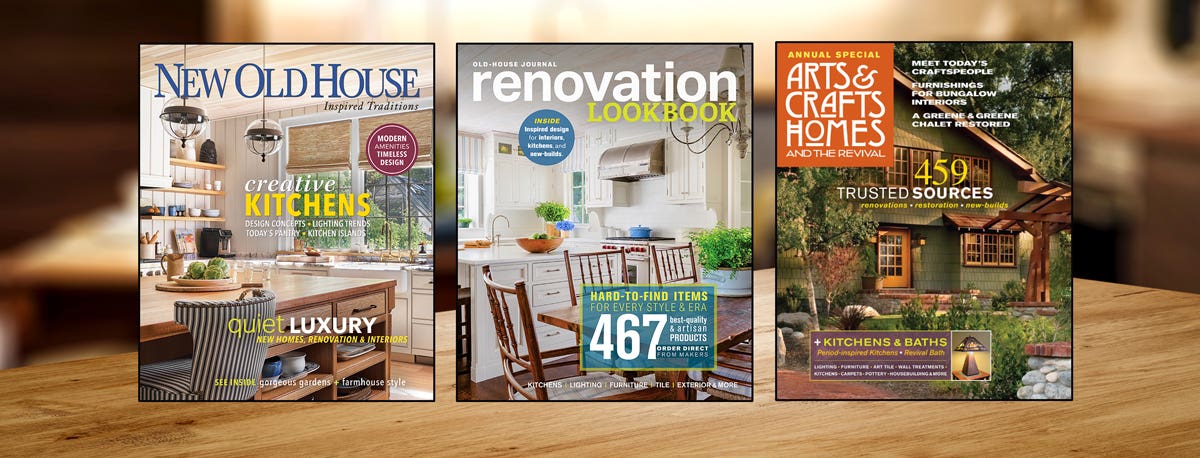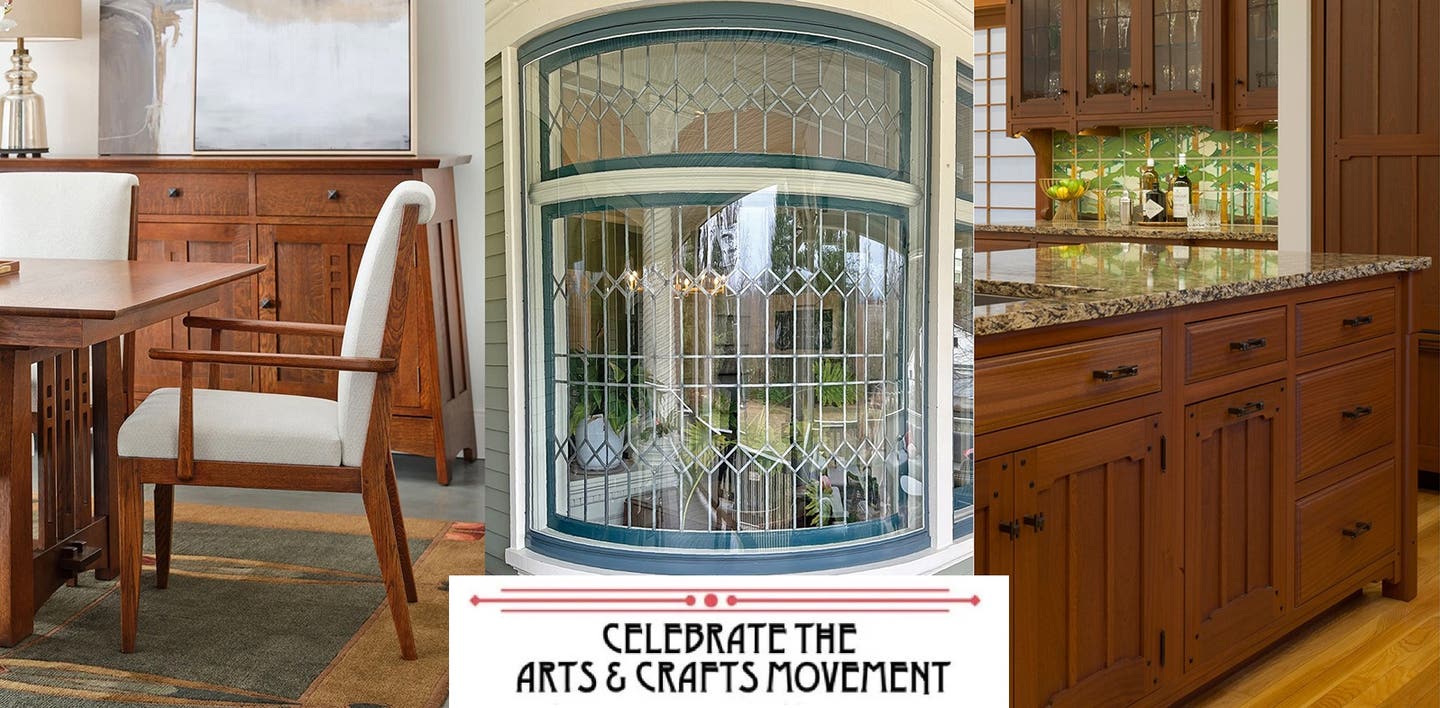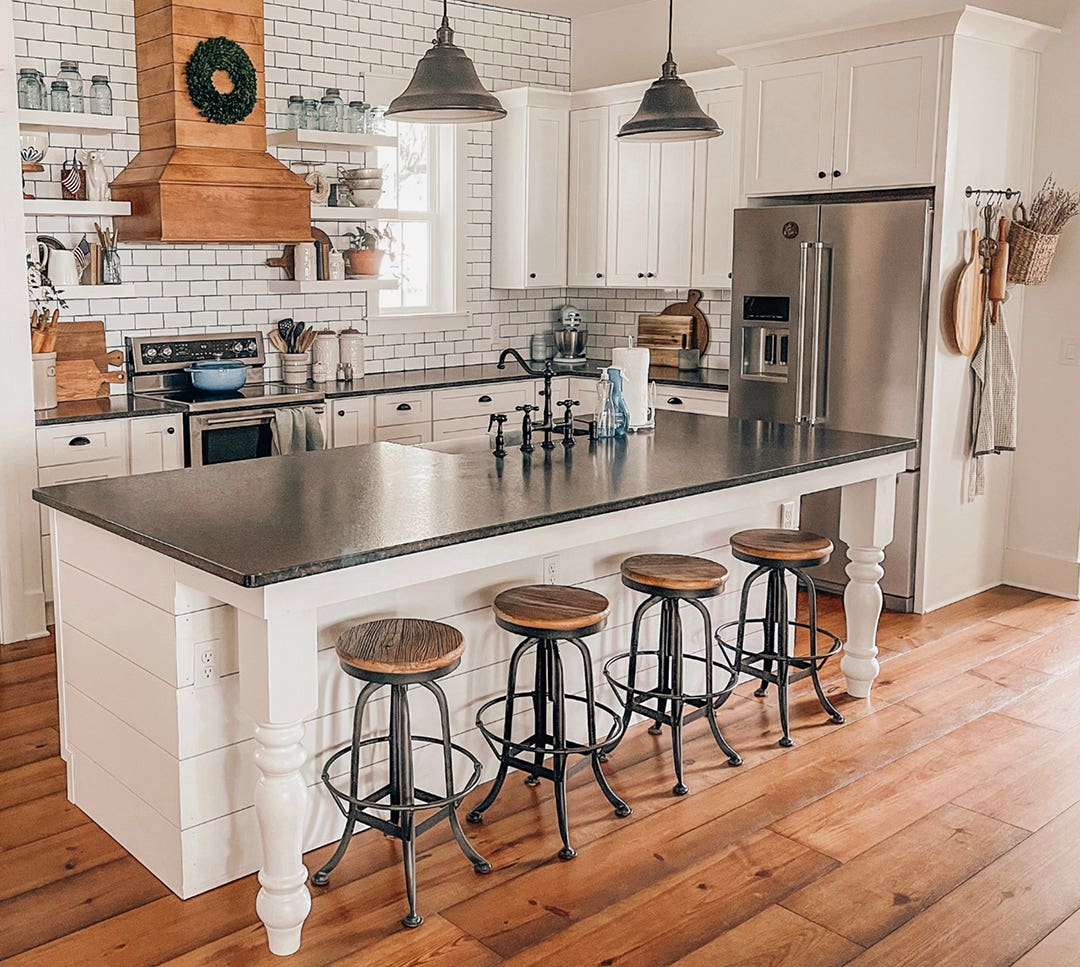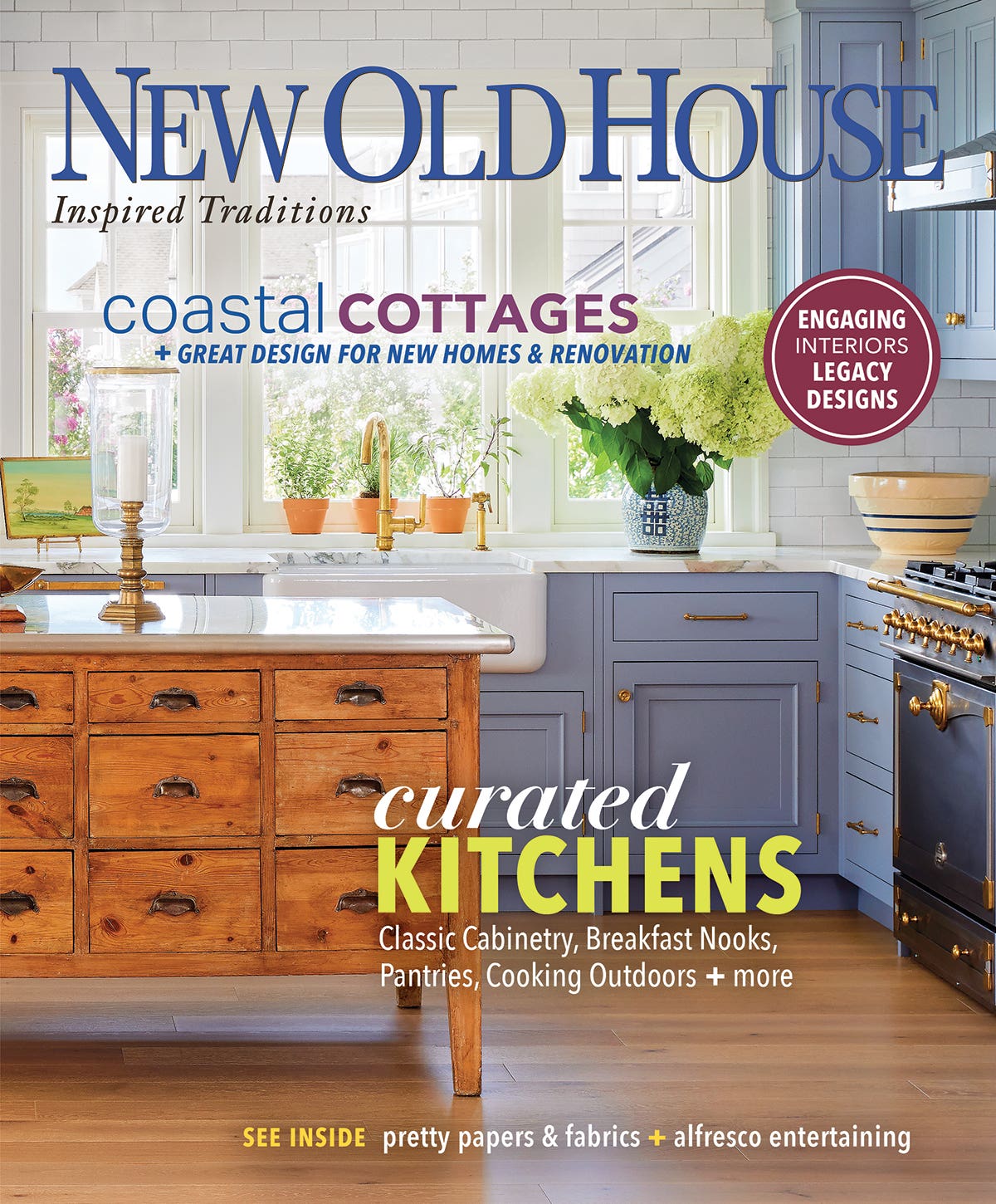The Guild: Steve Helberg
Whether it’s lighting, furniture, or a log house, Steve Helberg makes it with his own hands. Lamps, lanterns, furniture, an Adirondack-style house of peeled logs: Steve Helberg makes just about…
Whether it's lighting, furniture, or a log house, Steve Helberg makes it with his own hands.
Lamps, lanterns, furniture, an Adirondack-style house of peeled logs: Steve Helberg makes just about everything in his environment with his own hands, just short of the mountain in eastern Washington State where he lives. Even so, he’s collected hundreds of pounds of mica from that peak, shaving off flakes to build mica panels he applies with shellac to his exquisite lampshades.
That hand-built quality shines through every aspect of his work, beginning with tools he makes. Copper is more delicate than iron and must be heated at lower temperatures to be malleable. Helberg uses plastic mallets weighted with lead, for instance, to hammer elements like the heavy, scrolling fishtails found on some of his designs.
Steve started collecting antique lamps when he was in high school, partly because of the influence of an older friend. That friend, Roger Neidinger, lived in a Arts & Crafts house in Seattle so thoroughly furnished in the style “it was like walking into 1910,” Steve says. That led to collecting and selling other sorts of antiques, then restoration work and ultimately, making reproductions of antique lamps. He’s been making Arts & Crafts lighting full-time since 1987. “Believe it or not, I went to college to be an accountant. Needless to say, I was never the accountant type.”
Steve loves experimenting with designs that were done in the period but are unusual today, such as his counter-balance floor lamp, a takeoff on a Tiffany design. While many floor lamps from the early 20th century can be tippy, this one is solid, weighing almost 50 pounds. The base has feet that start on the floor and then travel up and over the top of the circular baseplate. It’s like a good antique: “The better the lamp is, the heavier it should be.”
Helberg is equally at ease working in wood, usually quarter-sawn oak, and he makes his own art glass and mica shades. Some shades include filigree overlay. Where period examples with overlay are usually smooth, Helbert hand-hammers his, often using repoussé techniques to add relief to features like the body of a peacock.
It’s his way of tipping his hat to the masters who came before him. In a break with the highly polished metalwork that preceded it, Arts & Crafts metalwork is supposed to be rough, “to prove that every piece of the thing has been hand worked.”
FINISHING THE WOOD
Steve Helberg is the rare artisan who doesn’t keep secret his methods for crafting and finishing his work. For example, the deep hand-rubbed finishes on his quarter-sawn oak bases are the result of seven or eight steps—not counting multiple applications and sanding between coats. He first wets the oak to raise the grain, then sands the wood with very fine sandpaper so that it will accept the aniline dye that serves as the base for the color. Once the color base is complete, he locks in the dye with a tung-oil stain. This keeps the base color from moving or changing when he applies the alcohol-based shellac he mixes himself. The final step is finishing the wood with a wax that’s been impregnated with color, or blackened. The finished lamp is then rubbed to a beautiful sheen.
PLANISH AND PATINATE
Creating a hand-hammered copper finish with a desired patina requires a precise sequence of steps, beginning with heating the metal and hammering it with special lighter-weight mallets. “All that hammering is called planishing,” Helberg says. Planishing originated with 17th- and 18th-century English utilitarian vessels, which were left rough. As they were handled, the high spots were rubbed—or relieved, to use the coppersmithing term—producing a brighter color that contrasted with the darker base.
Steve mixes all his own chemicals for the different finishes he makes. He begins with the same chemical used in the early 20th century: liver of sulphur, which despite its hellish-sounding name, is not toxic. He then uses specific chemicals to create a period finish. For example, for a certain Gustav Stickley finish, the inside of the hammer blow is jet black, while the outer edge is orange. Helberg re-creates it by applying a black patina, relieving it, then adding a burnt orange patina—all with fine steel wool and rottenstone, a polishing abrasive also favored by period metalsmiths.
Steve Helberg
Copperwood Lantern
Valleyford, WA
(509) 228-9342
stevehelberg.com
Mary Ellen Polson is a creative content editor and technical writer with over 20 years experience producing heavily illustrated know how and service journalism articles, full-length books, product copy, tips, Q&As, etc., on home renovation, design, and outdoor spaces.







